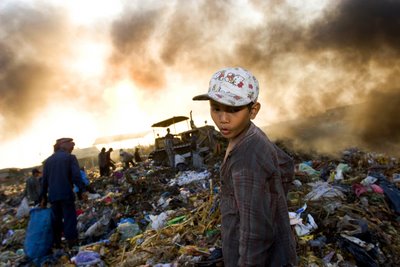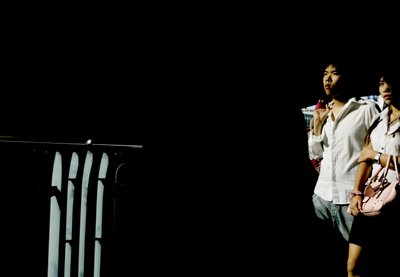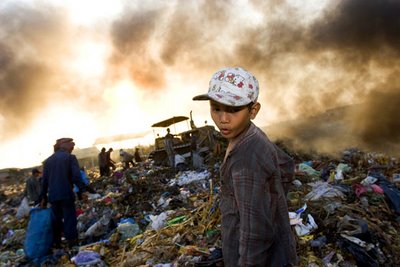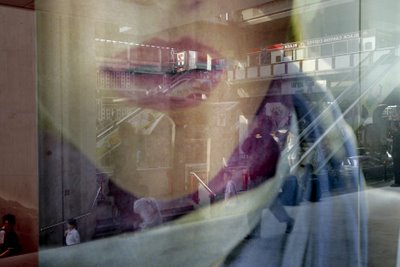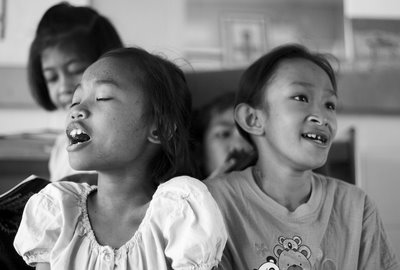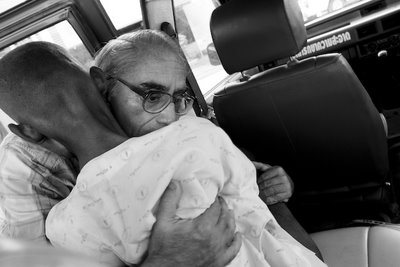
The last week of my trip in Thailand was perhaps the most incredible. I decided to head to an AIDS hospice at Wat Prabat Nampu. It is right outside of the town of Lopburi. After trying to coordinate through fax and telephone both in Thai and in English I decided to just go and see what happens. On a humid afternoon I headed to the train station called Hualophong. I bought a ticket for fifty cents, purchased a couple of ice cold beers, and cozied into my third class train seat. By the end of the trip I was feeling great and stepped off the train into a nice, quiet, country town. The noise of Bangkok was far behind me and there was nothing but the occasional motorbike and pickup truck wizzing by. I walked away from the trian station, had a bowl of soup on the corner and found a nice hotel that was half the price of what I was paying in Bangkok and much more welcoming. The next morning I headed to Wat Prabat Nampu. Here are the photos and essay from my experience.
Hope for the Hopeless: A Story of AIDS in Thailand
©Matthew Williams/ZUMA Press
March 1, 2006, Thailand – Thailand’s AIDS prevention has been revered as one of the most efficient models in Southeast Asia. By using public-education and safe-sex promotion in the red-light districts, Thailand drastically reduced the number of people being infected with AIDS in the last ten years. Today, however, the epidemic has shifted from sex workers into the everyday society: teens, mothers, fathers, and children. In addition to these trends, the HIV infection rate has increased dramatically within intravenous drug users, the youth, and the homosexual populations throughout Thailand. “I see AIDS as being a continuous problem. I don’t see how AIDS is really going to stop, because there are still people who are HIV positive and don’t know that they are HIV positive, and have lots of partners without knowing they are spreading the infection,” stated Usanee Janngeon, Health Coordinator for Mercy Centre in Bangkok.
Forty children run through the hallways of the Mercy Centre as they return from school on a sunny afternoon in March. They put their backpacks away, take showers, and end the day by lazily watching television, playing in the courtyard, or creating pieces of artwork with a collection of colored pencils and crayons. Located in Klong Toey Slum, in Bangkok, Thailand, the Mercy Centre is a safe haven for these orphans, who were rescued from life on the street in the slums. Their lives seem like those of any others at first glance, but most of these bright-eyed children have been orphaned by AIDS. They have to deal with the stigmas, health problems, and emotional struggles that accompany being a child with AIDS in Thailand. At 5:30 every evening, the children line up at the nurse’s station to take their daily dose of antiviral medication. Donated by the Thai government, the medication gives these children a chance at the future, which the Mercy Centre is taking an active role in planning for. According to Usanee Janngeon. “They will have a bright future, there will be medications for them, they are a very strong set of children, they are very determined, they are healthy, and we are planning now with our work for their future. We are planning what they are going to do when they finish the sixth grade. We are planning which university they are going to go to. Really, the children who are living at the Mercy Centre are our family. Many people have asked me how long do you think they will live, and I really hate that question. For me I think ‘What are we going to do with their future, how are we going to help them?’, instead of when they are going to die. Boys and girls living at the Mercy Centre, whether they are HIV positive or not, are treated as any other children⎯the same.”
Three hours north of Bangkok in the quiet town of Lopburi is the Buddhist temple, Wat Prabat Nampu, that is dedicated to helping adults who are HIV positive. The temple, run by monks who are also all HIV positive, was founded in 1992. Like the Mercy Centre, Wat Prabat Nampu is dedicated to helping HIV positive people and getting them back out into society. The hospice has grown tremendously in the past 13 years, but it still has a very rudimentary feel to it. The houses surrounding the hospice are full of HIV positive patients who spend their days doing chores around the temple grounds and living their lives to the fullest. Most of the patients who arrive at the temple are merely left at the front gate by family or friends, sometimes not ever being visited again. Although the Thai people are becoming more educated about living among HIV positive people, there remains a lot of fear among the Thai population. Organizations such as Wat Prabat Nampu encourage tourists to visit their museums and walk through the hospice to promote more understanding and awareness among the general population to combat the stigma surrounding AIDS. Each day between 50 and 100 visitors can be seen walking through the temple grounds.
Despite the grim circumstances that the patients and orphans at Wat Prabat Nampu and the Mercy Center are faced with, there is hope for the future. The patients are lucky to have medication available to them, medical care, and a professional staff dedicated to their futures. Thailand is slowly becoming more educated and understanding to the dangers and risks of living with family members and friends who have AIDS. With better medical care and the availability of anti-viral medication, children and adults alike are planning their futures and even re-entering society when they are well.





